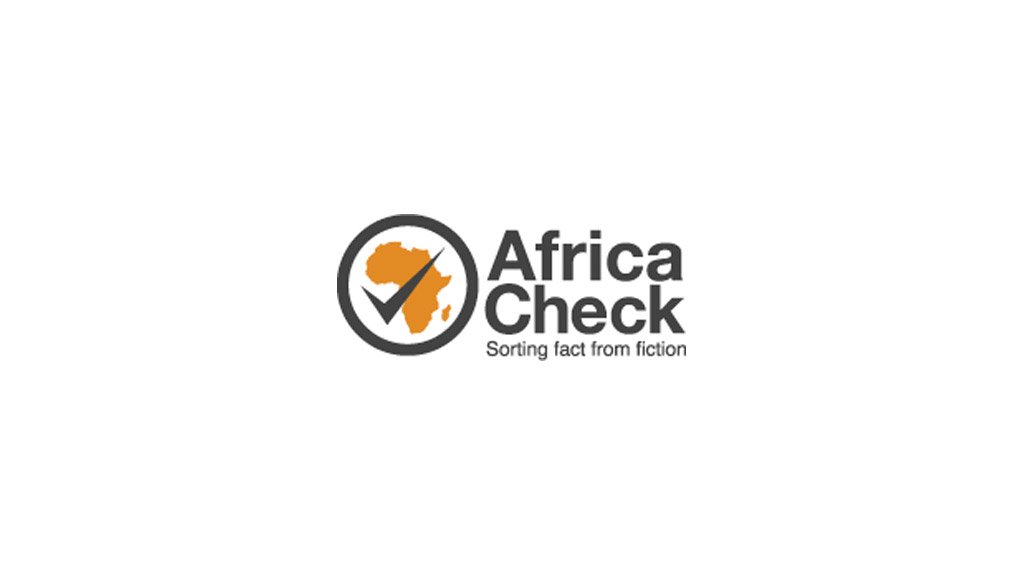Worried about being up to its ears in debt, Kenya’s government wants to hire experts to manage its borrowing, local media has reported.
Much of Kenya’s borrowing in recent years has been from China, US-based news website Quartz said in a July 2018 article.
But the country’s obligations to Beijing run “much deeper than many ordinary Kenyans realise” the article said under the headline: “China now owns more than 70% of Kenya’s external debt”.
Does China account for nearly three-quarters of the money Kenya owes foreign lenders?
Data from Kenyan treasury
Quartz said its source was an article in the Nairobi-based Business Daily newspaper that cited data from Kenya’s treasury.
Business Daily shared with Africa Check the documents it relied on for its article. These are official statistics that provide more information on the 2018/19 Kenyan budget statement.
They showed that as at 31 March 2018, Kenya owed China KSh534.1 billion, or 72% of the country’s total bilateral debt of KSh741 billion.
Bilateral debt generally refers to debt loaned by one state to another state, Odongo Kodongo, who has researched Kenya’s debt, told Africa Check. An example would be Kenya borrowing from Uganda. Kodongo is an associate professor at Wits University’s business school.
It therefore is not issued to private sector lenders such as banks, he added.
Share of bilateral debt held by China is accurate
Three experts told Africa Check that China’s share of Kenya’s bilateral debt – of more than 70% – was accurate.
Kodongo agreed, as did Prof Indermit Gill and research associate Kenan Karakulah from the Duke Center for International Development.
Gill and Karakulah said they crosschecked the newspaper’s data against that of the Central Bank of Kenya, while Kodongo used March 2018 data from Kenya’s treasury.
Bilateral debt is one part of external debt
But while it may be true for bilateral debt, it’s not true for all of Kenya’s foreign debt. Bilateral debt is just one of three components of external debt, Gill and Karakulah said.
External debt is the total public and private debt that a country owes foreign creditors, they explained. It “covers bilateral debt, multilateral debt and commercial debt. Therefore, Quartz’s article misinterprets [this] fact”.
Multilateral debt is owed to international financial institutions such as the African Development Bank, the World Bank and the International Monetary Fund. Commercial debt is money loaned by private organisations, such as banks, for profit.
“All bilateral debt [is] external debt, but not all external debt [is] bilateral debt,” Kodongo said. External debt also includes privately held international debt such as eurobonds.
It is therefore “not accurate” to say that China holds more than 70% of Kenya’s external debt, Kodongo said.
So, what is China’s share of Kenya’s external debt?
By Gill and Karakulah’s calculations, Kenya’s external debt as at 31 March 2018 was KSh2.51 trillion. It was made up of:
- Multilateral debt: KSh832.22 billion
- Commercial debt: KSh799.19 billion
- Bilateral debt: KSh741.04 billion
- Guaranteed debt (that backed by a public body): KSh140.04 billion
- China’s share of Kenya’s external debt is therefore KSh534.07 billion of KSh2.51 trillion.
- “Kenya’s debt to China is [thus] 21.3% of Kenya’s external public debt,” the researchers wrote in an email.
Why debt levels matter
Borrowing is useful if it is for investment and not consumption, experts told Africa Check.
How much a country produces and exports matters more than absolute debt levels, Odongo Kodongo, an associate professor at Wits University’s business school, said. This is because these are better indicators of a country’s ability to repay.
The terms of the debt – its interest rate and repayment period – are also significant, Duke Center for International Development international development researchers Indermit Gill and Kenan Karakulah, said.
It’s important to note that while Kenya’s external debt to China almost doubled between 2015 and March 2018, in the same period the country’s commercial debt grew faster, they added.
Conclusion: China holds just over 20% of Kenya’s external debt, not 70%
In an article drawing attention to what it said was Kenya’s rising public debt, US-based website Quartz said “China now owns more than 70% of Kenya’s external debt”.
It cited treasury data used in an article by Business Daily, a Kenyan newspaper.
But the data shows China holds just over 20% of Kenya’s external debt. We therefore rate this claim as incorrect.
Researched by Carlos Mureithi, Africa Check, a non-partisan fact-checking organisation. View the original piece on their website.
EMAIL THIS ARTICLE SAVE THIS ARTICLE
To subscribe email subscriptions@creamermedia.co.za or click here
To advertise email advertising@creamermedia.co.za or click here











